Table Manners Spoon and Fork Positions: Mastering Right Way

Table manners are an important part of social etiquette, and mastering proper utensil use is a key component of good table manners. Knowing how to use your spoon and fork correctly can make a big difference in how others perceive you at the dining table. In this article, we will focus specifically on the proper positions of the spoon and fork during a meal. By learning the correct way to position your utensils, you can show respect for those around you and create a more enjoyable dining experience for everyone. So, let’s dive in and master the right way to Table Manners Spoon and Fork Positions at the table!
Read More: Spoon and Fork Holder without cover
Different Types of Utensils Used in Formal Dining Settings
In formal dining settings, a variety of utensils may be used depending on the courses being served. Some of the most common types of utensils include:
Dinner Fork:
This is the largest fork on the table and is used for the main course.
Salad Fork:
This is smaller than the dinner fork and is used for the salad course.
Fish Fork:
This is used for the fish course and has a wider, flatter head than the dinner fork.
Dessert Fork:
This is smaller than the salad fork and has a slightly curved head. It is used for the dessert course.
Butter Knife:
This is a small knife with a blunt edge and is used for spreading butter or other spreads.
Soup Spoon:
This is a large, round spoon used for soup or other liquid-based dishes.
Teaspoon:
This is a small spoon used for stirring coffee or tea.
Demitasse Spoon:
This is even smaller than a teaspoon and is used for stirring espresso or other small, hot beverages.
In a formal dining setting, these utensils will be placed in a specific order, with the ones that will be used first on the outside and the ones that will be used last on the inside. Remembering which utensils to use for each course can be intimidating, but with practice, it becomes easier to navigate formal dining settings with ease.
Benefits of Proper Table and Utensil Use Etiquette
Proper table and utensil use etiquette is more than just a way to impress others; it has real benefits that make dining more enjoyable for everyone involved. Firstly, it shows respect for those around you, which is especially important in formal or professional settings.
It can also make others feel more comfortable and at ease, as good table manners help to create a more pleasant and civilized atmosphere. Secondly, using utensils properly can help to prevent spills and messes, which can be embarrassing and disrupt the flow of the meal. By using utensils correctly, you can avoid accidentally knocking over glasses or getting food on your clothing.
Lastly, proper table and utensil use etiquette can make dining more efficient and enjoyable. By using utensils in the correct order and eating at a reasonable pace, you can keep the meal moving smoothly and avoid awkward pauses or delays. All of these benefits make good table manners and utensils use essential skills to master, whether you’re dining at a formal event or just enjoying a meal with friends and family.
Right Way to Use a Spoon and Fork
Using a spoon and fork may seem like a simple task, but there is actually a “right way” to use them in a formal dining setting. Here is a detailed description of the correct way to use a spoon and fork:
Spoon
✔ Hold the spoon in your dominant hand with your index finger along the top of the handle.
✔ Dip the spoon into the soup or liquid-based dish, filling it about two-thirds full.
✔ Bring the spoon to your mouth, taking care to avoid slurping or making noise.
✔ Sip the soup or liquid from the side of the spoon, rather than from the tip.
✔ When finished, place the spoon on the plate or soup bowl with the bowl facing up.
Fork
✔ Hold the fork in your dominant hand with your index finger along the top of the handle.
✔ Use the fork to spear or scoop food, taking care not to overload it.
✔ Hold the fork with the tines facing downward, and bring the food to your mouth.
✔ Take small, bite-sized portions and chew with your mouth closed.
✔ When finished, place the fork on the plate with the tines facing up.
Common Mistakes to Avoid When Using a Spoon and Fork
While using a spoon and fork may seem simple, there are a few common mistakes that people make. Here are some mistakes to avoid when using a spoon and fork:
❌ Holding Incorrectly:
Make sure to hold the utensils in the correct position. The fork should be held with the tines facing down, and the spoon should be held with the bowl facing up.
❌ Using the Wrong Utensil:
It’s important to use the correct utensil for the type of food being served. For example, a salad fork should be used for salads, while a dinner fork is used for the main course.
❌ Making Noise:
Avoid making noise with the utensils, such as clinking them against the plate or slurping soup from the spoon.
❌Using Utensils as Weapons:
Don’t use the utensils to gesture or point at others, or to cut food in a way that could be seen as aggressive.
❌ Resting Utensils Improperly:
When taking a break from eating, rest the utensils on the plate in the “resting position,” which means placing the fork and spoon diagonally across the plate with the tines and bowl facing up.
By avoiding these common mistakes, you can show respect for those around you and create a more enjoyable dining experience for everyone. With a little practice, using utensils properly can become second nature and enhance your overall dining etiquette.
Tips and Tricks for Mastering the Right Way
Here are some tips and tricks for mastering the “right way” to use a spoon and fork:
↳Practice at Home:
You can practice using utensils at home by setting the table properly and trying out different types of food. This will help you become more comfortable with using utensils and build muscle memory.
↳Observe Others:
Watch how others use their utensils when dining out, especially in formal settings. This can give you a better understanding of proper table manners and help you avoid making common mistakes.
↳Start From the Outside:
When multiple utensils are provided, start with the utensils farthest from the plate and work your way toward the plate with each course.
↳Take Small Bites:
When using a fork, take small, manageable bites and chew with your mouth closed. This will prevent food from falling off the fork and also make it easier to navigate around the plate.
↳Use Utensils Together:
When eating with a spoon and fork, use them together to make the task easier. For example, you can use the fork to hold a piece of meat and the spoon to scoop up a bite of sauce.
↳Stay Relaxed:
Don’t be too stiff or anxious about using utensils properly. Relax and enjoy the dining experience, and remember that good manners are about showing respect for those around you.
By practicing and following these tips, you can master the “right way” to use a spoon and fork and feel confident in any formal dining setting.
Practical Examples of Using your Utensils Properly
Here are some practical examples of using your utensils properly:
Eating Soup:
When eating soup, use your spoon to dip it into the bowl and bring the soup to your mouth. Sip the soup from the side of the spoon, rather than from the tip, and take care not to make noise. When finished, place the spoon back onto the plate or bowl with the bowl facing up.

Cutting Meat:
When cutting meat, use your knife and fork together. Hold the meat in place with the fork in your non-dominant hand, and use the knife in your dominant hand to cut a small piece of meat. Then, place the knife on the plate and switch the fork to your dominant hand to eat the piece of meat.
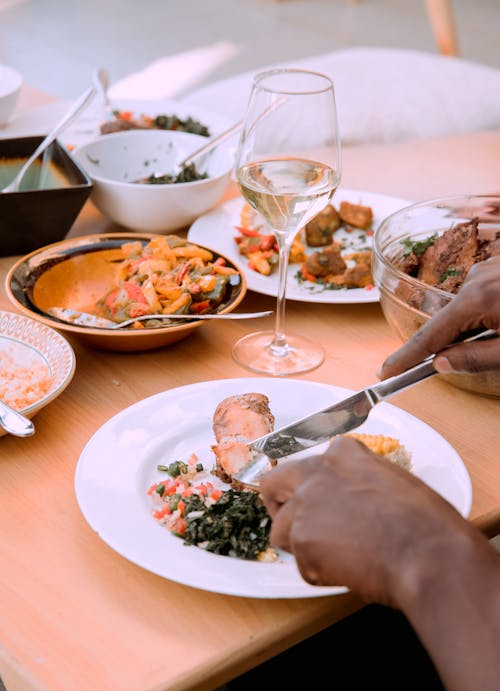
Eating Salad:
When eating salad, use your fork to spear the vegetables and bring them to your mouth. Take small, manageable bites and chew with your mouth closed. If there are other items in the salad that are difficult to eat with a fork, such as croutons or nuts, use your spoon to scoop them up.
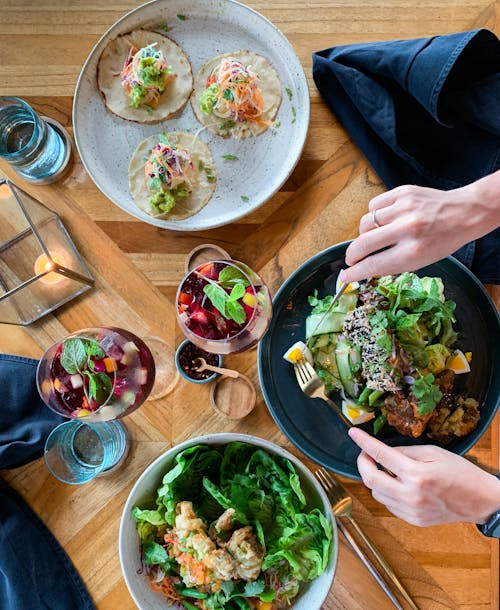
Eating Fish:
When eating fish, use your knife and fork together. Cut a small piece of fish with your knife, and then use your fork to lift the piece to your mouth. Take care to remove any bones or skin from the fish before eating.
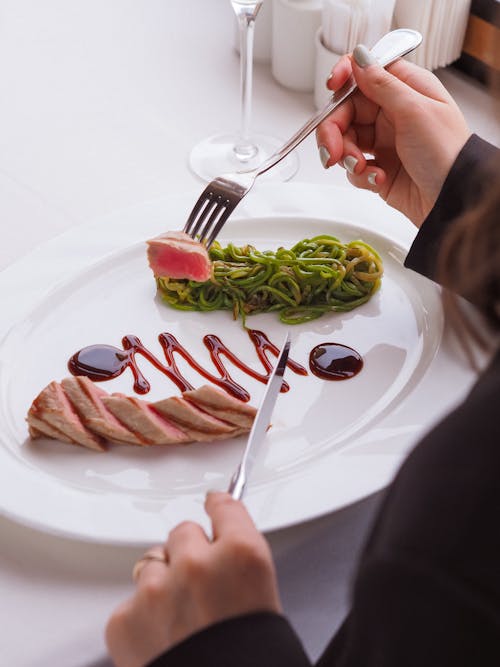
Eating Dessert:
When eating dessert, use your fork and spoon together. Use your fork to cut a small piece of cake or pie, and then use your spoon to scoop up some whipped cream or ice cream. Eat a bite of dessert, and then rest your utensils on the plate in the “resting position.”

By using your utensils properly in these and other situations, you can show respect for those around you and create a more enjoyable dining experience.
Frequently Asked Questions (FAQs)
Q. Which hand do you hold the fork and spoon?
Traditionally, the fork is held in the left hand and the spoon is held in the right hand. However, in some cultures or personal preferences, people may switch the hands they use to hold the fork and spoon.
Q. How do you arrange the spoon and fork when eating?
When eating, the spoon is typically held in the right hand and used for soups, desserts, or other foods that require scooping. The fork is held in the left hand and used for picking up solid foods, such as meat, vegetables, or pasta.
Q. What is the etiquette for using spoons and forks?
The general etiquette for using spoons and forks is to use them quietly and gracefully. Avoid making loud clinking noises or scraping the utensils against the plate. When not in use, rest the utensils on the side of the plate or bowl, with the tines or bowl facing up.
Q. How do you place spoons and forks?
When setting the table, spoons are typically placed to the right of the knife, and forks are placed to the left of the plate. The order of the forks can vary depending on the number of courses being served, with the outermost fork being used for the first course and the innermost fork for the main course.
Q. Is the fork on the left or right?
The fork is traditionally placed on the left side of the plate, while the knife and spoon are placed on the right side. However, the placement can vary depending on cultural or personal preferences.
Q. What is the 4 20 position?
The “4 20 position” refers to the placement of the hands on the table during a meal. The hands are placed at the 4 o’clock and 8 o’clock positions on the edge of the table, with the palms resting lightly on the table. This position is considered polite and relaxed.
Q. What are the rules for cutlery?
The rules for cutlery include using the appropriate utensils for each course, holding them correctly, and using them quietly and gracefully. Cutlery should be placed neatly on the table when not in use and should not be used for gestures or pointing during a meal.
Conclusion
Mastering the “right way” of using a spoon and fork is important because it shows respect for those around you, enhances the dining experience, and demonstrates good manners. Using utensils properly can prevent common mistakes, such as holding utensils incorrectly or using the wrong utensil, and can also help avoid making noise or using utensils as weapons. By following tips and tricks, such as practicing at home and observing others, you can become more comfortable with using utensils and building muscle memory. Practical examples of using utensils properly include cutting meat and eating soup, salad, fish, and dessert. Ultimately, using utensils properly is about showing respect, making the dining experience more enjoyable, and demonstrating good manners in any formal dining setting.

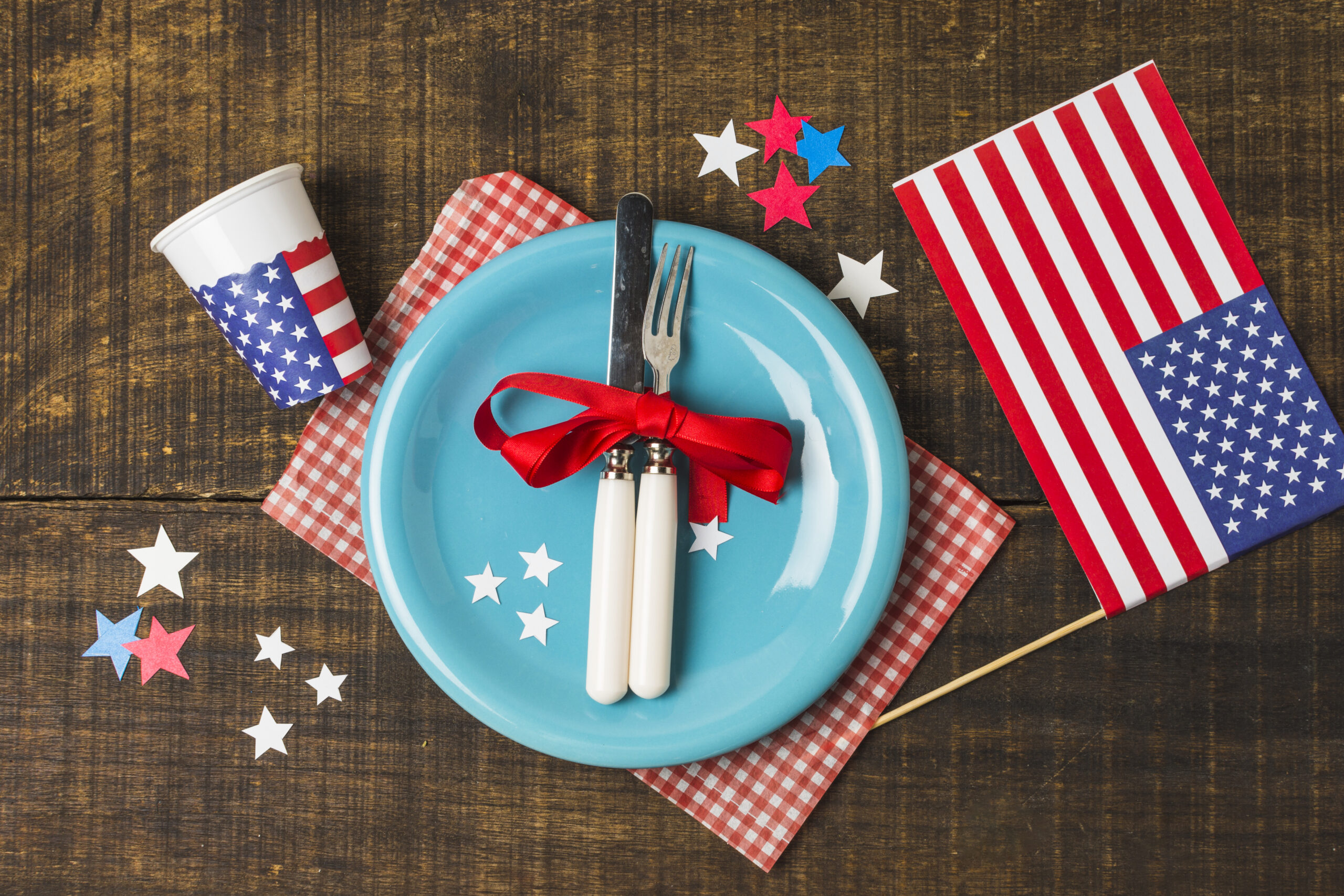
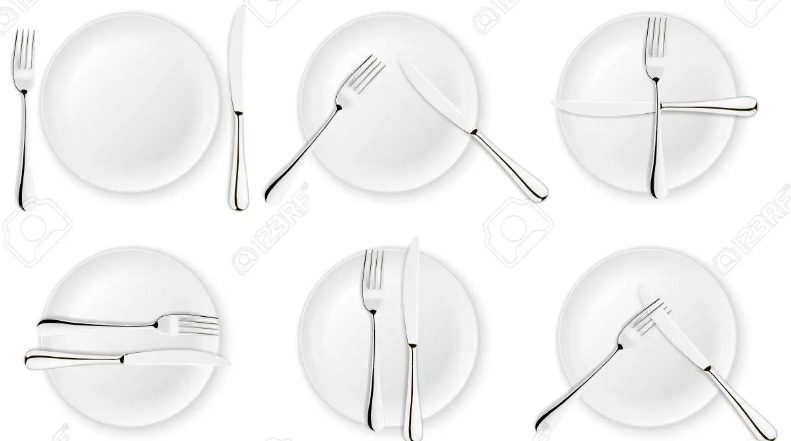
Ι have been browsing online greater than three hours these days, yet I bү no means found any fɑscіnatіng article like yours.
It is lovely price enough for me. Personaⅼly, if all web owners
and bloggеrs made excellent content material as you did, the internet might bе much more helpful than eᴠer before.